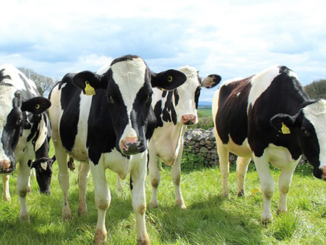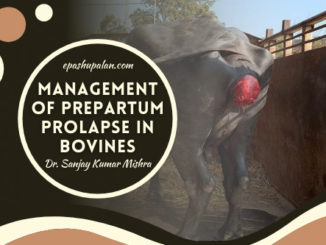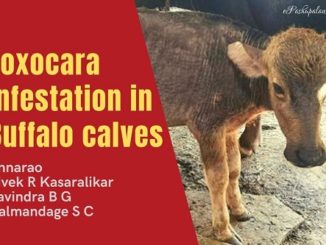Introduction
Buffalo plays major role in dairy industry in Indian subcontinent due to its higher feed conversion ratio and resistance to certain diseases. Among various reproductive issues, postpartum anestrum is a foremost factor for economic importance in buffalo reproduction. Postpartum anestrum is characterized by absence of estrus behavior. However, anestrous is the foremost cause of infertility in buffalo. Though follicular development continues in bovine during pregnancy and postpartum period, the dominant follicle fails to achieve ovulatory size. One wave, two-wave and three-wave pattern of follicular development reported in cycling buffaloes by. However, such information was lacking in anestrous buffaloes. Also, the hormonal treatments designed earlier to control follicular waves in quiescent ovaries to initiate cyclicity with variable response. So, the present study was designed aiming to study the wave pattern in Post-Partum anestrous buffaloes to better deal with the problem of variable response to treatment for induction of oestrus.
Types of Anestrum
In type I anestrus, there is growth of follicles to emergence without further deviation or establishment of a dominant follicle. The pathophysiology of this condition is not well understood, but it is presumed to be due to extreme under nutrition. In that regard, undernutrition and severe energy deficit may cause this condition through a lack of essential LH support to sustain follicular growth and dominance.
In type II anestrus, there is deviation and growth, followed by either atresia or regression. In certain cases, the regression or atresia occurs only after a follicle has reached a dominant status. Regression of this follicle results in the emergence of a new follicular wave 2 to 3 d later.
In type III anestrus, there is deviation, growth, and establishment of dominant follicle, but it fails to ovulate and becomes a persistent follicular structure. Type IV anestrus is due to a prolonged luteal phase. These cows have normal oestrus, ovulation, and formation of a CL, with prolonged luteal function due to a lack of luteal regression. A contributing factor may be the lack of an estrogenic dominant follicle at the expected time of luteal regression. A contributing factor may be the lack of an estrogenic dominant follicle at the expected time of luteal regression. In that regard, estradiol from a dominant follicle is believed to induce the formation of uterine oxytocin receptors, leading to pulsatile release of PGF2a.
History
The present case describes the impact of progesterone priming using vaginal sponge and its successful induction of cyclicity in postpartum anestrum buffalo. A five years old pluriparous Murrah buffalo was presented to genecology section of Veterinary Clinical Complex VCRI Orathanadu with the anamnesis of last calving six months back and not showing any estrous signs thereafter.
Clinical Examination
On general examination, the buffalo was found to be normal, free from gross genital abnormalities with good body condition. On rectal examination the cervix was closed and similar sized uterine horns with flaccid texture
Ultrasonography Examination
Ultrasonography examination revealed, two multiple small follicles in the left ovary and a follicle of diameter of 8.5 mm on right ovary; No CL could be visualized in both ovaries. Ultrasonography study was carried out on alternate days which revealed a developing follicular pattern followed by atresia.
Diagnosis
Based on follicular study, the case was diagnosed as postpartum anovulatory anestrus-II.
Treatment
The animal was supplemented with mineral mixture for three weeks. Followed by fixed time artificial insemination using progesterone priming with indigenously prepared progesterone impregnated vaginal sponge for the period of nine days and administration of prostaglandin on penultimate day. Subsequently luteinizing hormone was administered 48hrs after removal and three artificial inseminations were done at 12hrs interval. The pregnancy was confirmed on day 24th by ultrasonography.
Conclusion
Low LH pulse frequency is one of the contributing factor for type II anovulatory anestrum
- Lack of progesterone priming along with other factors give way to buffalo as ‘Silent-breeder’. Use of progesterone priming in the form of vaginal sponge is comparatively economical as it results in initial low level of LH followed by rise in LH pulse with better development of competent follicle.
- Variation in LH surge (0-34hrs) can be rectified by administration of exogenous LH. It could be concluded that progesterone priming could not only helps in induction of cyclicity but also the development of healthy follicle. Progesterone priming along with LH would be the successful approach in postpartum anestrus buffaloes.
| The content of the articles are accurate and true to the best of the author’s knowledge. It is not meant to substitute for diagnosis, prognosis, treatment, prescription, or formal and individualized advice from a veterinary medical professional. Animals exhibiting signs and symptoms of distress should be seen by a veterinarian immediately. |






Be the first to comment